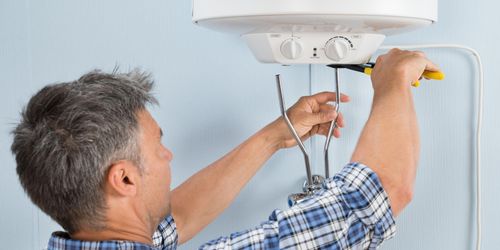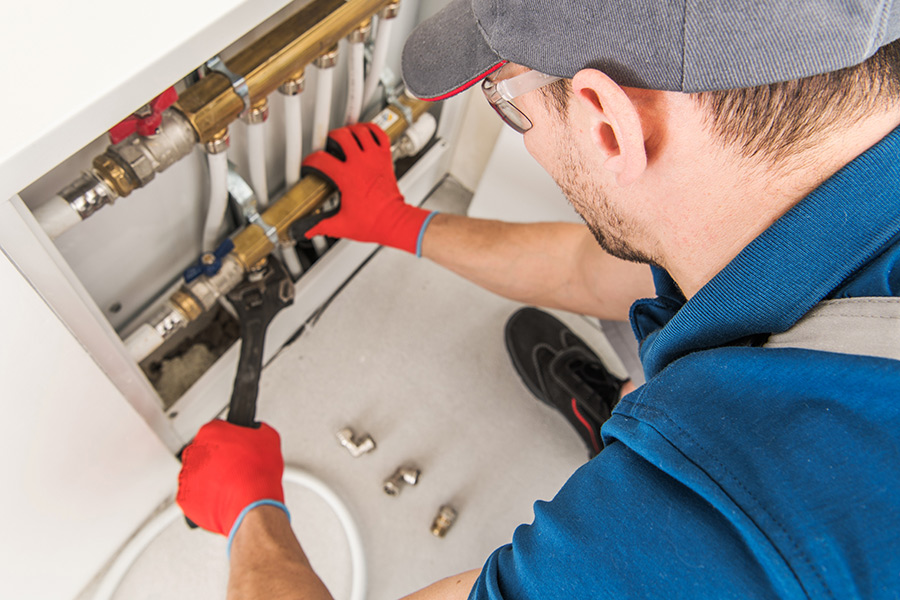We have stumbled upon the article on Common Hot Water Heater Problems down the page on the net and concluded it made sense to write about it with you in this article.

A hot water heater is one of the most essential standard appliances that can be discovered in a residence. With water heaters, you don't require to experience the stress of heating water manually whenever there is a demand to wash, do the laundry, or the meals. There is always a possibility that your water heater would certainly act up as with the majority of mechanical gadgets.
It is essential to keep in mind any kind of little malfunction as well as tackle it quickly prior to things get out of hand. A lot of times, your water heater starts to malfunction when there is a build-up of debris as a result of continuous use. As a preventative measure, periodic flushing of your water heater is advised to stop sediment accumulation and prevent useful failure.
Usual water heater emergency situations and just how to manage them
Too little warm water
It may be that the water heater can not support the hot water demand for your apartment. You could update your water heating system to one with a larger capacity.
Varying water temperature level.
Your water heater could start generating water of different temperature levels normally ice hot or chilly warm. There may be a need to replace either the heating or the thermostat device of your water heating unit.
Leaking hot water heater container.
In this circumstance, you need to turn off your water heating unit, allow it to cool down, and also carefully look for the resource of the trouble. At times, all you require to do is to tighten a couple of screws or pipeline connections in situations of minor leaks. If this does not work as well as the leak persists, you could need to utilize the services of a technician for an ideal replacement.
Tarnished or smelly water
When this happens, you require to recognize if the problem is from the container or the water source. If there is no amusing odor when you run cool water, then you are particular that it is your water heating unit that is damaged. The stinky water can be created by rust or the build-up of microorganisms or sediments in the water heating unit storage tank.
Verdict
Some home owners disregard little warning and also minor faults in their hot water heater unit. This only brings about more damages and a feasible total malfunction of your device. You ought to manage your water heater faults as quickly as they come near stay clear of even more expenditures as well as unnecessary emergency difficulties.
With water heating units, you don't need to go through the stress of heating water manually every time there is a demand to take a bath, do the laundry, or the recipes. It might be that the water heating unit can not sustain the hot water need for your apartment. Your water heating system might start generating water of different temperature levels normally ice cool or scalding warm. If there is no funny odor when you run cold water, after that you are certain that it is your water heating system that is malfunctioning. The odiferous water can be caused by rust or the build-up of microorganisms or debris in the water heater tank.
Common Water Heater Issues and What You Should Do
What Type of Water Heater Do You Have?
Before we begin it’s first important that you identify the type of water heater you have on your property. There are two main types of water heaters out there: conventional and high efficiency.
Both of these types of products typically use either gas or electricity to heat power. There are also solar water heaters that use a thermal collector on the roof or yard to heat the water.
While these models are not as common, they can cut heating costs in half. In this article, we will focus on conventional and high efficiency.
How Do My Electric and Gas Water Heater Work?
Though they look similar, electric and gas water heaters work very differently. It’s important to know their basic function because often problems can be specific to the heating source.
In the electric model, a thermostat on the side of the machine detects the temperature of the water in the tank. When the temperature needs to rise electricity flows to a heating element suspended in the water.
Gas models also use a thermostat device — typically with a mercury sensor at the tip and an additional sensor called a thermocouple. The thermocouple detects whether the pilot light is on and controls the flow of gas.
When the thermostat drops below the appropriate level gas is released which becomes ignited by the pilot light. The flame heats the bottom of the water tank which causes hot water to rise and cold water to drop.
This natural circulation continues until the water reaches the desired temperature. Then, the thermostat triggers the gas control valve to shut off the flow of gas.
What Are the Most Common Issues and How Do You Fix Them?
https://happyhiller.com/blog/common-water-heater-issues-and-what-you-should-do/

I ran across that article about Warning Signs You Need Water Heater Repairs when doing research the web. Are you aware of somebody who is looking into Common Hot Water Heater Problems? Be sure promote it. I am grateful for your time. Come back soon.
Click Here To Read More